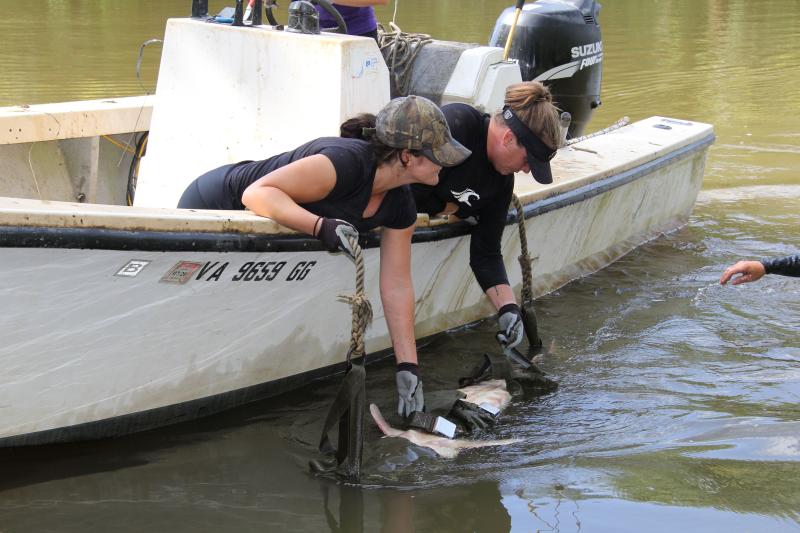Fish That Lived Alongside Dinosaurs Now Face Extinction
Every few years, reports surface in the media about a scaly, prehistoric-looking “sea monster” washing up on an East Coast shore or jumping in a river and startling boaters. The animal is usually quickly identified as an Atlantic sturgeon. These fish have existed for more than 120 million years, and did indeed roam the Earth with the dinosaurs. Until the early 20th century, they were common in East Coast rivers, from Maine to Florida.
Sturgeon Play Important Role in Pamunkey Culture
The Pamunkey River in Virginia, named for the Pamunkey Indian Tribe, used to be filled with Atlantic sturgeon.
Atlantic sturgeon played an important role in Pamunkey life. They were not only food and income, but catching an Atlantic sturgeon and riding on its back was considered a rite of passage for young men.
Today, a small population of an undetermined size remains in the Pamunkey and Mattaponi Rivers, tributaries to the York River. The York River is too salty for successful spawning, but Atlantic sturgeon are known to spawn in the Pamunkey. They may also spawn in the Mattaponi, although that has not been confirmed.
Warren Cook, a member of Pamunkey Tribe, recalls, “When my grandfather fished for sturgeon, the fish were so big that they had to put a halter around them and drag them in the water back to shore. They were over 6 feet long. Then, they would take the roe out. My grandmother would process it. She would take it apart and salt it, leave it a couple of days, and then wash and salt it again. Next, they would pack it up, and they would ship it by train up to Baltimore for processing as caviar.”
Survival Is at Stake
Atlantic sturgeon were once found in great abundance, but their populations have declined greatly due to overfishing and habitat loss. Added to the Endangered Species List in 2012, these large, bony-plated fish are struggling to survive as they continue to face a gauntlet of threats. Atlantic sturgeon are very sensitive to low oxygen, pollution, and other poor water conditions, which harm development of sturgeon offspring. These fish spawn in rivers, many of which have dams that block access to critical spawning grounds. Routine dredging of rivers to keep waterways open for commercial and recreational boats can kill eggs and young fish, as well as adults. They are also hit by vessels traveling the rivers.
Tribal Members Work Alongside Scientists
In 2018, the Pamunkey Tribe received a 3-year Species Recovery Grant from NOAA to address four goals:
- Create a more comprehensive ecological picture of the Pamunkey and Mattaponi Rivers and develop a Pamunkey River Keeper role to continue the work and foster improved stewardship
- Improve physical models of the rivers to better understand the relationship of water quality factors to Atlantic sturgeon spawning habitats
- Develop an estimate of the spawning population(s) in the rivers
- Determine how well sonar works for counting sturgeon
For the last three years, members of the Pamunkey Tribe have worked alongside researchers from Chesapeake Scientific to study these fish and their habitat. They collected water quality data at various stations throughout the river system, and captured and tagged Atlantic sturgeon. They also trained a Pamunkey tribal member for the York River Keeper position.
“We are going out there and tagging them, taking DNA samples, and trying to get an abundance estimate of the adult spawning population,” says tribal citizen April Deacy in a new video premiering at the Pocahontas Reframed Film Festival called Pamunkey River: Lifeblood of our People.
“I’d never actually seen one before I worked this grant,” says tribal citizen Desiree Nuckols, who helps tag and track the enormous fish, “so it’s cool to actually work with the fish you hear stories about.”
“This work provides vital information about sturgeon and how each of us can make a positive difference toward recovering sturgeon populations,” says Lynn Lankshear, NOAA Fisheries regional species recovery coordinator for Atlantic sturgeon.
Learn more about this grant and other Species Recovery Grants awarded to tribes.



